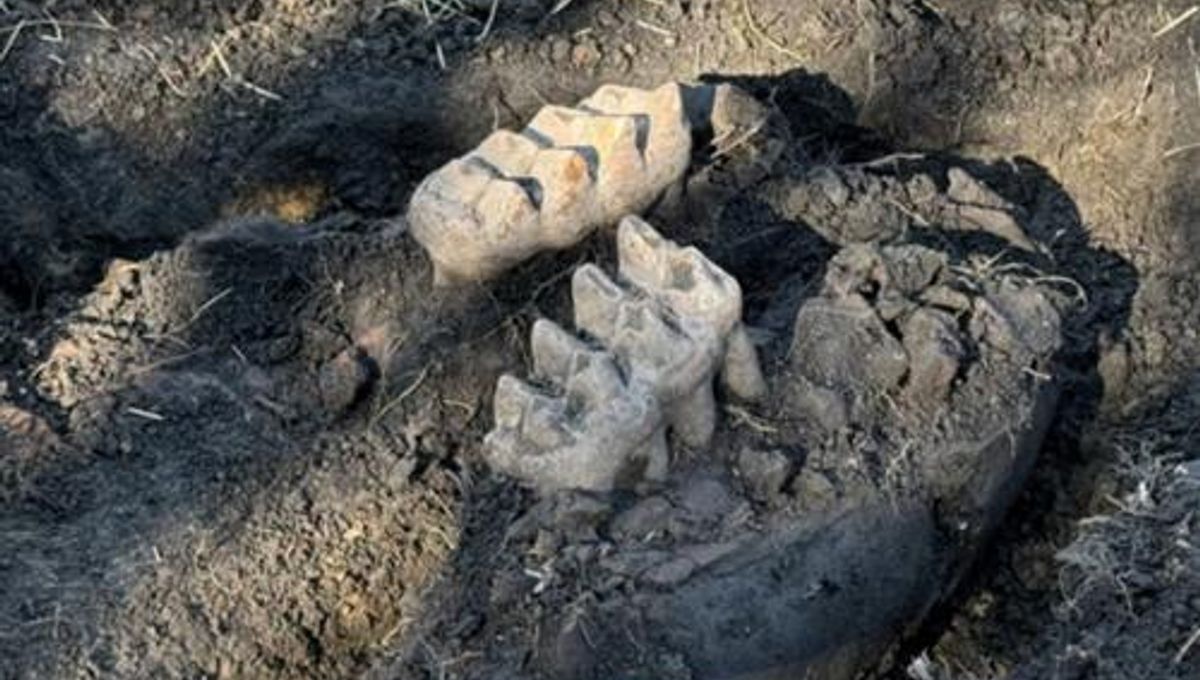
For the first time in 11 years, a complete mastodon jaw has been unearthed in the state of New York. What makes this discovery even more remarkable is that the prehistoric specimen turned up in someone’s backyard.
The bizarre yet thrilling find was reported by a homeowner near Scotchtown in Orange County, who happened to notice two teeth sticking out above the ground. Concealed by a plant, the ancient beast’s mandible had gone unnoticed for thousands of years, but was finally revealed when the proprietor dug beneath the topsoil to expose another pair of teeth just a few inches below the surface.
“When I found the teeth and examined them in my hands, I knew they were something special and decided to call in the experts,” said the anonymous New Yorker in a statement. Researchers from the New York State Museum and SUNY (State University of New York) Orange later arrived on the scene to recover the well-preserved, intact jaw along with fragments of toe and rib bones.
The remains were later identified as those of an adult mastodon, although carbon dating and further analyses are yet to be conducted. Researchers hope that these examinations will provide a more complete picture of the creature’s age, diet, and habitat.
“This mastodon jaw provides a unique opportunity to study the ecology of this magnificent species, which will enhance our understanding of the Ice Age ecosystems from this region,” explained Dr Robert Feranec, director of Research & Collections and curator of Ice Age Animals at the New York State Museum. So far, more than 150 mastodon fossils have been found across the state, with around a third of these being unearthed in Orange County.
A relative of modern elephants, the American mastodon roamed North America from Alaska to Mexico during the Pleistocene, before becoming extinct around 13,000 years ago. Having emerged eons earlier than mammoths, the mastodon lineage dates back to around 24 million years ago, though the two did overlap in time and space during the Ice Age.
Despite both belonging to the Proboscidea order and sharing a number of physical characteristics, mastodons and mammoths were actually fairly easy to tell apart. For one thing, the latter were considerably larger and instantly recognizable for the curved tusks possessed by both males and females, while the former had straighter tusks, which featured only on males.
However, the biggest differences between the two ancient species could be found in their cheek teeth: while mammoths had flat, ridged molars that were adapted to chewing grass, mastodons sported distinctive cone-like cusps on their gnashers, which they used for gnawing on woody plants.
In fact, it’s these oddly boob-shaped teeth that gives the animal its name, which is derived from the Greek words mastos – meaning breast – and odont, for tooth.
Somehow, mastodon has a better ring to it than boobtooth.
Source Link: Complete Mastodon Jaw – The First In 11 Years – Found By New Yorker In Backyard